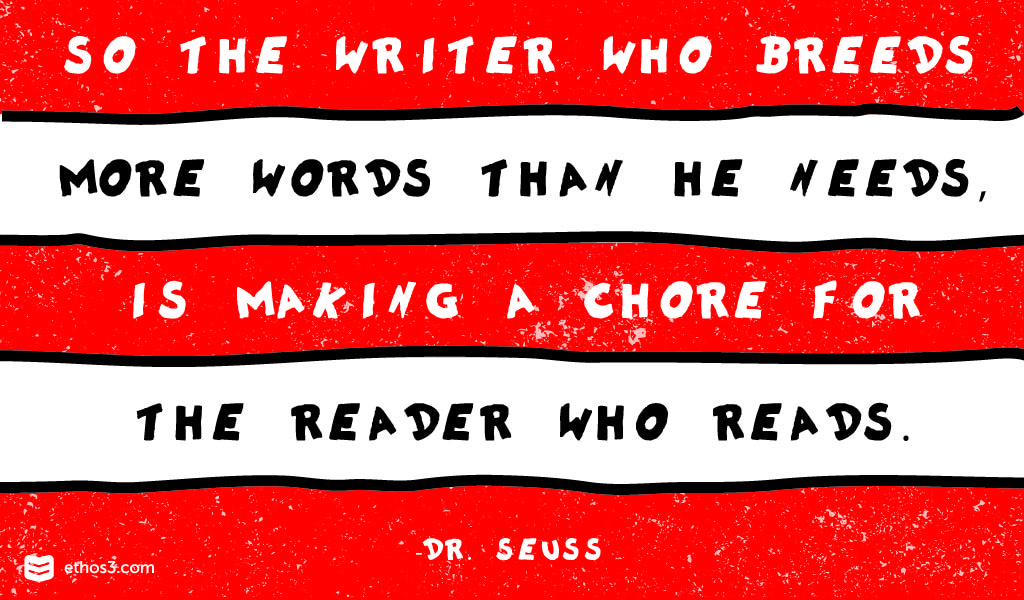Many presenters easily get lost in a sea of presentation content. They finally have the chance to get their ideas and offerings in front of an audience! They want to share every minor detail, every minute nuance. Unfortunately, that approach typically results in a missed opportunity to connect with your audience and resonate through your unique messaging. Try the following 6 strategies for editing your presentation content:

1. Start with an outline
The best method for reigning in your presentation content is beginning each deck with an outline. Map out the trajectory of your narrative so that your content creation is focused.
2. Place 30 characters or less per slide
The more words that are on your slides, the less attention you’ll receive from your audience. Twitter gives you a 140-character limit on your tweets. So why not give yourself a 30-character limit for your slides? Do it, and see the success of your presentations rise.
3. Write a poem
Just because you are dealing with a presentation, does not mean you can’t get a little literary with it. Ethos3 CEO Scott Schwertly recommends implementing a 5-7-5 pattern within your deck. For example, the text on slide #1 would have 5 syllables, slide #2 would have 7 syllables, and slide #3 would have 5 syllables. Here’s how it might look for a startup pitching to investors.
Hair dressers need help
They want new ways to style hair
Here’s the solution
Related Post:
The Complete Guide to Editing Presentation Content
4. Align verb tenses
Consistency is key to editing presentation content. Before finishing your deck, review each slide and every part of the script to ensure that the verb tenses are aligned.
5. Include relevant data
Data and statistics are highly interesting. But when presenters try to cram every number and intriguing piece of information into their presentation, they run the risk of maxing out the cognitive load of their audience members. Only include data that is relevant to your core presentation message. It’s part of creating a focused narrative.
6. Reduce examples and stories
In addition to selecting only the most important data, presenters should remember to reduce the number of examples and stories presented throughout their talk. Again, incorporate those examples or stories that most comprehensively convey a particular point or message.
